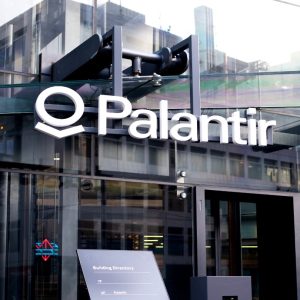
Nvidia has announced a new suite of services intended to support manufacturers of humanoid robots. These include its new NIM microservices platform for robot simulation and learning, and its OSMO orchestration service designed to run multi-stage robotics workloads. These tools, said Nvidia, are specifically aimed at aiding the development, training, and construction of the next generation of humanoid robots.
“The next wave of AI is robotics and one of the most exciting developments is humanoid robots,” said Nvidia founder and CEO Jensen Huang said. “We’re advancing the entire Nvidia robotics stack, opening access for worldwide humanoid developers and companies to use the platforms, acceleration libraries and AI models best suited for their needs.”
Jumping on the humanoid robots bandwagon
Nvidia OSMO, now available, is a cloud-native managed service that enables users to orchestrate and scale robotics development workflows across distributed computing resources, whether on-premises or in the cloud. This service reduces the time required for robot training and simulation, facilitating tasks such as synthetic data generation, model training, reinforcement learning, and software-in-the-loop testing at scale.
The MimicGen NIM microservice, meanwhile, creates synthetic motion data from teleoperated data captured by devices like the Apple Vision Pro. The Robocasa NIM microservice generates tasks for robots and creates simulation-ready environments within OpenUSD, a framework for developing and collaborating within 3D worlds.
Nvidia has also introduced two new AI microservices that impact simulation workflows. These services use the Nvidia Isaac Sim, an application for robotics simulation built on the Nvidia Omniverse platform.
At the ongoing SIGGRAPH computer graphics conference in Denver, Nvidia demonstrated an AI and Omniverse-enabled teleoperation reference workflow. This workflow allows the generation of substantial synthetic motion and perception data from a minimal set of human demonstrations.
Nvidia provides three computing platforms to support humanoid robotics development, which are Nvidia AI supercomputers for training models, Nvidia Isaac Sim, built on Omniverse, for refining skills in simulated environments, and Nvidia Jetson Thor humanoid robot computers for running the models.
Through the new Nvidia Humanoid Robot Developer Program, developers can gain early access to these technologies and the latest releases of Nvidia Isaac Sim, Nvidia Isaac Lab, and Project GR00T humanoid foundation models.
Industry-wide adoption of humanoid robotics
Other companies are also advancing their technologies significantly. For instance, Tesla is advancing with its Optimus Gen 2 humanoid robot.
GXO Logistics, on the other hand, is deploying humanoid robots in its warehouse operations in Georgia, US, demonstrating their utility in enhancing logistics. BMW plans to utilise humanoid robots in its South Carolina manufacturing, indicating a wider adoption in automotive production.
Meanwhile, Microsoft and OpenAI are investing substantially in AI robotics company Figure AI, highlighting their commitment to accelerating humanoid robotics development.
Nvidia’s advancements in Universal Scene Description
In addition to its efforts in humanoid robotics, Nvidia has introduced significant enhancements to Universal Scene Description (OpenUSD), an open and extensible ecosystem for 3D worlds. These advancements will broaden the use of this universal 3D data interchange framework across various sectors, including robotics, industrial design, and engineering.
By integrating new OpenUSD-based generative AI and Nvidia-accelerated development frameworks on the Nvidia Omniverse platform, industries can access tools to create more precise virtual environments.
This technology supports the development of the next generation of AI and robotics by enabling detailed simulation of industrial projects and environments.






